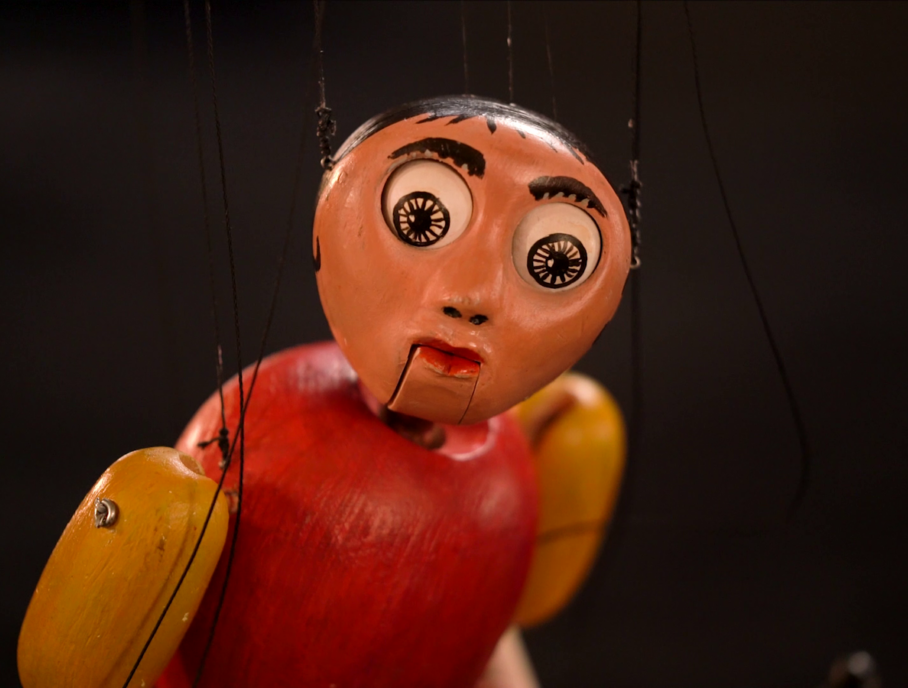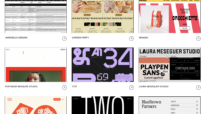Member Perspectives: What designers owe each other
A call for designers to recognize the invisible labour, tools and ideas that make our work possible.
 Bauhaus Marionette Nachbau
Bauhaus Marionette Nachbau In software development, there’s a well-known concept called technical debt—the cost of taking deliberate shortcuts. Developers sometimes write quick, imperfect code to get a product into people’s hands, knowing they’ll pay later in maintenance and cleanup.
The logic is simple: speed now, refine later. Even the new “vibe coding” trend, where AI rapidly generates code and teams refine it later, is a kind of calculated debt—trading precision for progress and faster-to-market functionality.
Designers carry a kind of debt too. But ours isn’t measured in code or time—it’s measured in inheritance. Every typeface, platform and tool we use builds on the unseen work of others: designers, typographers, printers, educators and artists who came before us.
And yet, we designers don’t readily acknowledge those past contributions.
I call this design debt. Design debt is the quiet accumulation of uncredited influences, shared tools and the forgotten but original ideas that underpin our daily work. Developers talk openly about repaying their debt through refactoring or improved processes. Designers, by contrast, have no shared language for repayment—or even recognition.
But maybe it’s time we do.
In my experience, designers do not typically provide attribution or acknowledgement of whether the work that they do represents, in part or in whole, the intellectual property of others, the historical contributions of predecessors or the traditions of various cultures, western or otherwise.
This is not meant as a slight against us designers. We are on the receiving end of a very complex historical past. Designers are late capitalism’s artists, commercial and otherwise, and they do not walk in the same footsteps as other workers, like developers.
I believe that most graphic designers are honest. We have to be—it is the only way to create distinctive and unique work. Designers are some of the hardest working folks in this far too-rapidly changing field of communications.
We are also held to irrationally high standards. And we are constantly subject to criticism, warranted and not. As well, designers hold up the ethical flag far more often than other marketing professionals.
Still, it’s worth asking why designers so often neglect to acknowledge the many significant contributions from our recent and distant past. Is it habit? Oversight? Or has our professional culture simply never learned how to give credit where it’s due?
I think that there are three reasons, which I will outline next. And then I will present a quick framework for how we might start addressing our deep design debt.
Our history is long
First, designers contend with a long and eccentric historical timeline. “Graphic design” as an industrialized career took shape in the early 20th century, in part through schools and movements like the Bauhaus. But also through hybridized art forms like Dada and Surrealism.
We are hybridized–part artists, part mechanics, part strategists, part technologists, part producers. It’s sometimes hard to know how to attribute our ideas. They seemingly arrive out of the ether (or the old ethernet).
It’s also hard to measure the contributions of what other designers have delivered over the years. Design is private and public. It is overt and covert. It is often hidden within plain sight. People don’t know design until they see it. And for us, design history (legacy and recent) is tucked away in drawers or on bookshelves.
Yes, we have films like Helvetica or Linograph, which touch on massive contributions to the field. But what about all the early typographers who first knocked the serifs off their fonts to create the first sans-serifs? What about the folks who designed the first graphical user interface? And how would we even start to repay the debt for our use of ubiquitous typefaces like Helvetica or a successful update like Inter?
Our tools are invisible
When objects, digital or physical, are valuable, we tend to discount the debt that they embody. Think about a Tiffany & Co. diamond ring. It may have a value of $10,000 and someone may be happy to be the recipient of such a ring – but the transaction in purchasing the item cancels the debt to the original designer. When we purchase something of value, we are released from the debt to the designer / manufacturer / seller because we exchanged it for our hard-earned money.
In our case, designers purchase design tools. We subscribe to Adobe Creative Cloud, we have Figma licenses, we acquire Pantone books. We use free and open source platforms like GitHub, Wikipedia and Mastodon. Like diamond rings, these are also real assets with real value; after buying them, we rarely thank or think about the people behind them.
Why should we publicly recognize the tools we already pay for? We should recognize them precisely because payment does not erase our creative and code debt.
Our work is unsigned
I don’t know why designers don’t sign their work. Yes, you might see a “Site by Mangrove Web” in the footer of some of the sites that I help to make these days. But that little mark represents over a dozen individuals, including designers, developers, writers, strategists and project managers, not to mention administrators, art directors, etc.
Illustrators might put their initials on an image. Photographers may get credit in a caption. But most websites are unsigned, as is most other designed material. We don’t do attribution.
And, more simply, designers don’t give or take credit for their work. As artists, even of a commercial nature, why don’t we take credit for our work more readily? Is our signature a distraction to the artwork? Are we not proud of our work? Are we so introverted that we do not want public recognition? Do clients (and studios and agencies and corporations and governments) really prefer worker anonymity?
Short of watermarking, which rarely adds to a design’s charm, we leave our work out in the cold orphaned, with no parent to claim it.
Websites, logos, signs, pamphlets, brochures and bills — millions and millions of objects go unclaimed.
Where does this leave us?
Well, it’s a bit of a messy state of affairs for graphic design. But isn’t it always?
Here’s how we might start repaying some of the design debt to which we’re all indebted.
Acknowledgements are achievable
First, let’s publicly recognize the remarkable people who came before us. Typographers, lithographers, photographers, printers and poster-makers—each day, we designers benefit from their past contributions to our work, to our teams and to our professional lives.
Next, let’s bring back the colophon. A colophon is a dedicated page in which people, ideas and tools are publicly acknowledged for their contributions. Links don’t work well with printed matter, but for the web, pointing to the parties involved offers both validation and valuable search engine optimization.
We can also acknowledge our teams, colleagues and partners at our workplaces and externally when posting our launches and accomplishments on platforms. When you call out a new project on social media, include a shoutout to those who contributed to the project on purpose and unwittingly — the type designers, but also the stock photographers, the palette people and the software designers.
At Mangrove, we have a Slack channel called #kudos to shout out and congratulate team members upon the launch of a new site, share praise from a client and recognize the hard work of our colleagues and partners.
Finally, we can celebrate and support the writers, historians and educators who help us to understand our field. Buying a new design book, subscribing to a graphic designer’s newsletter or attending an RGD webinar provides the feedback, fuel and funding that design and designers need as we move deeper into the age of automation.
P.S. How did I write this article? I drafted the piece in Ulysses for Mac using iA Writer’s Duo typeface. I moved it to Google Docs using Arial for final review by the team at the RGD and I made small, final structural changes using ChatGPT. It took me about 5 hours to write and refine.

Andrew Boardman RGD
Mangrove Web
I’m a designer, artist, educator, and small press publisher based in Montréal, working to build a more humane web — one that’s ethical, inclusive, and thoughtfully crafted. I currently serve as creative director at Mangrove Web, a purpose-driven B Corp where I lead the creation of accessible, sustainable websites built with open source tools. For 20 years, I ran Manoverboard, a small but strapping studio and the first Certified B Corporation in Manitoba. I’ve taught design and theory at the University of Manitoba and Red River College, and co-founded a scholarship program supporting BIPOC design students. I write Dear Designer, a weekly newsletter exploring the emotional, technological, and social dimensions of creative work. I also serve on the board of the Canadian Typography Archives and run a RISO-based press from my Montréal studio.
Tags
Related Articles


Karen Ng-Hem RGD, Stephanie Strawbridge RGD, Taralyn Carver RGD, Cassandra Wesenhagen RGD














